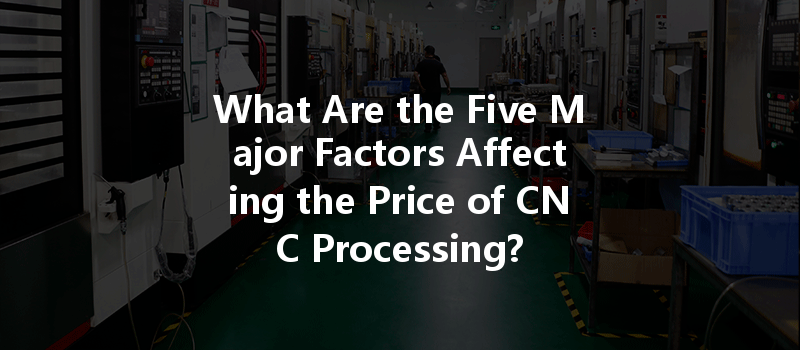Opening
Did you know that the global CNC machining market is projected to reach approximately $100 billion by 2025? As the demand for precision manufacturing continues to rise, understanding the factors influencing CNC processing costs becomes increasingly important. Whether you’re a manufacturer, a designer, or a business owner looking to produce custom parts, knowing how to navigate CNC pricing will help you make more informed decisions.
Understanding CNC Processing Costs
CNC machining is not just about milling or turning; it’s a sophisticated, nuanced process where several elements can drive the pricing. While specific designs and materials will vary widely, five key factors consistently affect the cost of CNC processing.
The type of material you choose for your project plays a crucial role in determining the overall processing cost. Materials like aluminum, brass, stainless steel, and plastics each have their own unique properties, machinability, and market prices.
Aluminum (like 6061 or 7075) is often more cost-effective for CNC machining due to its balance of machinability and strength. Stainless steel, while strong, typically incurs a higher processing cost due to its toughness and the tools required to work with it.
CNC machining can also work with various plastics, like ABS or nylon, which usually have lower raw material costs but may require different finishing techniques to achieve desired precision.
If you’re looking at advanced materials like titanium or carbon fiber, be prepared for a significant price increase not only in material costs but also in machining expenses due to the specialized tools and processing parameters needed.
The intricacy of a part can have a profound impact on costs. CNC machining is highly precise, which means that more complex geometries will demand a greater investment of time and resources.
Features like tight tolerances, undercuts, and intricate patterns can increase machining time and may require additional fixturing. Simple, straightforward designs, on the other hand, facilitate faster production times and lower costs.
Design files must often go through Computer-Aided Design (CAD) software to be optimized for machinability. Extra time spent in design revisions adds to the cost.
The duration of the machining process directly correlates with the expense. This is one of the most significant cost influencers in CNC processing.

Mill time, tool changes, setup, and downtime all factor into the machining hours. Advanced CNC machines with automation capabilities can operate for longer periods without human intervention, reducing machining time and costs.
Bulk orders can spread out setup costs per part over a larger production volume, effectively lowering the cost of each individual item. However, single, low-volume projects may incur higher costs due to the setup time.
Most CNC machined parts require additional finishing steps to meet the final specifications or aesthetic qualities. Post-processing can include operations such as polishing, anodizing, or heat treating, each of which will add to the manufacturing expenses.
Surfaces that need tight tolerances might require grinding or other precise finishing methods, while cosmetic finishes will require processes like bead blasting or powder coating. Understanding these needs early will help estimate the total cost.
Inspection and quality control are essential, particularly for industries like aerospace and medical devices where requirements are stringent. This additional step can also drive costs but is necessary for ensuring the reliability of the final product.
The scale of your project can significantly sway pricing. In general, the larger the production run, the lower the per-unit cost you will encounter.
CNC processes tend to become more cost-effective as quantity increases. Bulk production runs can take advantage of optimized machining strategies and reduced need for setups, translating to lower individual part costs.
If you’re looking for a long-term partnership or recurring work, you may be able to negotiate costs with a CNC machining supplier based on agreed-upon quantities.
CNC processing prices are not set in stone; they are influenced by multiple dynamic factors. By considering the material, complexity, machining time, post-processing requirements, and production volume in your planning, you can better estimate costs and make informed decisions that align with your project’s budget and goals.
Understanding these factors is crucial for anyone involved in CNC machining, whether you’re a designer, a buyer, or a manager. Each element can provide insights that help you streamline manufacturing while maintaining the quality you need. By being proactive about addressing these costs, you set yourself up for successful manufacturing outcomes and enhanced competitiveness in the marketplace.
As the CNC machining landscape continues to evolve, staying informed about the intricacies of pricing will empower you to navigate the challenges head-on. Take the time to evaluate each factor carefully and collaborate with your machining providers. It might just lead to innovations that can enhance both your process and your final products.



